An Inner Child and the Time Machine |
--Christopher S. Rubel, 16 May 2008
Ghosts of Vista Bonita
Living in Glendora can be a daily life review for old timers. I drive my inner child around town, noticing houses, streets, fragments of scenes from years ago triggering spring-loaded memory floodgates.
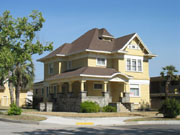 The “mansion” on
the southeast corner of Carrol and Vista Bonita once was the Rectory
for Grace Episcopal Church, back when that church was behind Hastie’s
Foundery and Blacksmithing shop (later Imperial Savings and Loan). Henry
Rubel was then the Rector. Now it’s a parking lot.
The “mansion” on
the southeast corner of Carrol and Vista Bonita once was the Rectory
for Grace Episcopal Church, back when that church was behind Hastie’s
Foundery and Blacksmithing shop (later Imperial Savings and Loan). Henry
Rubel was then the Rector. Now it’s a parking lot.
The first house we lived in from 1935 to 1940 was that big house at 220 S. Vista Bonita now “For Sale by Owner.” My wife Katherine and I met Bud Johnson there this Saturday morning to walk through it. He’s helping the absentee owners with the house for now. His memories added to mine. He spent many childhood hours there, from 1964 on. In my inner child’s mind’s eye, I visualized rich memories, some of which I’d like to share here.
First, upon entering the front door, the staircase greeted me and I recalled hiding there behind the banister late at night watching while large parties dwindled to the last guest. Heinz and Dorothy Rubel loved to entertain with food and constant music, Heinz at the piano and Dorothy singing, getting others to join in.
Sometimes Heinz and Dorothy did their personalized duets, e.g., The Hog Calling Song. Joe and Mrs. Penner (with her three-inch fingernails) came to several of those parties, along with a crowd of local friends and Hollywood extroverts. Watching Mrs. Penner eat, with her long nails was captivating. I got nudged and told in a whisper, “Chris. Stop staring.”
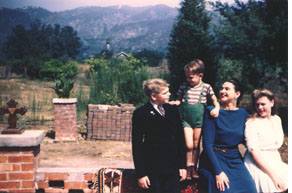 I
lived in that house from when I was two to seven. My sister Dorchen
was five through ten. Michael, born in 1940, only knew the next house,
built then at 861 E. Leadora. (That place has been transformed by
its 21st Century owner into a lavish hacienda-like estate.)
I
lived in that house from when I was two to seven. My sister Dorchen
was five through ten. Michael, born in 1940, only knew the next house,
built then at 861 E. Leadora. (That place has been transformed by
its 21st Century owner into a lavish hacienda-like estate.)
Sam Baxter,
the Chief of Police, lived
about
four houses south of us, which meant the Police never had to close down
one of Heinz and Dorothy’s parties and, in those days, no one felt
unsafe. I guess our neighbors didn’t complain. At least I never
knew of anyone upset by the gathered people and lines of cars parked
on those narrow
streets.
This house, complete with basement, and a large barn-type garage out
back, had enough room to accommodate constant guests without anyone feeling
crowded. It still seems like a huge house. We wandered from one spacious
room to another today and I could almost hear the ghosts.
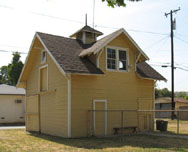
Second, out by the barn (garage) came the memory of chasing Freddy Mitchell
down the alley and having a fight with him when I was about seven. That
was a bad day. His big brother later cured me of fighting, a long-time
score well settled in the school yard of Sellers School.
Third in my flood of memories was triggered by the back porch and back yard. My bedroom upstairs was my observation “tower.” I could keep track of all the activities of the back yard from the upstairs windows. But, what I most liked to do was sit nightly with the crowd around the fire ring. It was during the depression, the 1930s. I was probably three to six for most of these memories. The house is about four blocks north of the Santa Fe tracks and it was “marked” by the hobos. I’m sure I’m inflating the numbers, but nearly every night of the week, from three to about twenty people, slept in the back yard. Always with bread and Glendora dairy milk, endless stews or soups bubbled in a large kettle hanging over the fire pit providing reliable nourishment for any and all travelers. They were mostly men riding the rails to the central valley, coming from Arkansas, Tennessee, Oklahoma, (the Dust Bowl) etc., just like in the Steinbeck stories.
Sometimes, along Carrol Avenue, there were Model As and Bs, early pickups and light trucks, early Fords and Chevrolets parked, loaded with furniture, mattresses tied to their tops. Not only did the hobos, those who rode the rails, have our place marked for hospitality, but those who could drive cars Highway 66 from the southeast to the San Joaquin Valley knew they could stop for refreshment, relief, and rest at 220 South Vista Bonita.
Rarely did anyone stay more than a night, but once in a while a tent was pitched among the fruit trees beside the barn for a few days. Dr. Chamberlin Stanton, and other physicians came from time to time to take care of sick travelers. Being too young to understand the economics of the depression, the constant business of people coming and going in our backyard, using our back toilet, taking hay-bucket showers with the hoses out back, all of it just seemed like a natural way for everyone to live.
In reflection, perhaps they were really nice to me because so many of those hobos had left families and children back home. Perhaps I reminded them of a kid they missed dreadfully, knowing it would be many months before they could send for families, if ever. In cold weather the back porch of that great house had people sleeping on the floor, on mats, and some on folding canvas cots. The talk and story-telling around those nightly fires came with southern accents and I learned how to talk “southern” pretty well by the time I started kindergarten (attending the little, red school house then on the northeast corner of Bennett and Wabash).
What a gift of childhood, remembering sitting on orange field boxes, sometimes with boards nailed on them for backs, with those depression pilgrims, listening to their guitars, harmonicas, their stories, their arguments, and to tote the beans, water, blankets, pillows, following the orders for the day, taking care of exhausted, homesick, anxious people! Once in a while a woman would be in the group and sometimes even children. But, those times were rare.
Dorothy and Heinz put some of them to work for a while, finding local jobs in the packing houses, house-cleaning jobs, and sometimes citrus grove work. But, usually these people were just passing through, riding the rails. About 1938, Sam Barnes came from Monrovia to live with us. Several people, including Heinz Rubel, helped set him up with a shoeshine stand outside of Harvey’s or Messer’s barber shop. Sam also developed a lively window-washing service. He became part of our family, it seemed to me. I think he was the first black man to go to Citrus Junior College, and that wasn’t without protests. Sam later moved to Perris and I visited him there several times, and he still felt like part of the family. But that wasn’t unusual. In my family, nearly everyone seemed like part of the family. The whole of Glendora was my family home and we just happened to bed down in a house in Glendora an example of “it takes a village to raise a child."
My inner child is alive and well and these memories flourish as I drive through Glendora doing my life reviews. Bob Bly wrote somewhere that when he was twenty-five he met a five year old boy inside of himself. And, now that he is sixty-five, that little boy is nine. I’m paraphrasing, but you get the point, I hope. Now that I’m seventy-five, my inner child is about eleven. Wandering through the old, beautiful Vista Bonita home today, that inner eleven-year-old regressed to about five years old. Glendora’s a time machine. The Glendoran is the playbook for this time-machine town. Thank you, Joe and Ida Fracasse for your time-machine playbook.
Chris Rubel (chrisrubel at uia.net)
North Live Oak Avenue
Glendora California 91741
(626) 335-6085
To Odo Stade Bio | Back to The Shriek | Film Your Movie at Rubel Castle | InviteSite
|
||
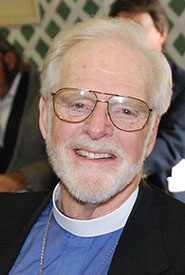 |
Pucketychoo, by Chris Rubel
A Personal History of Water in Glendora and the San Gabriel
Communities
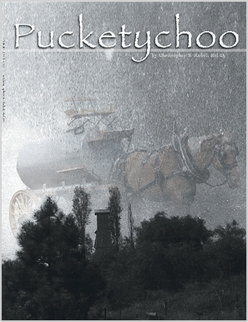
Interested in more memories (and true facts) of Glendora?
As water transformed the San Gabriel Valley from desert to the epicenter of the citrus industry, so did it transform a boy, working in the pump houses of the mid Twentieth Century.